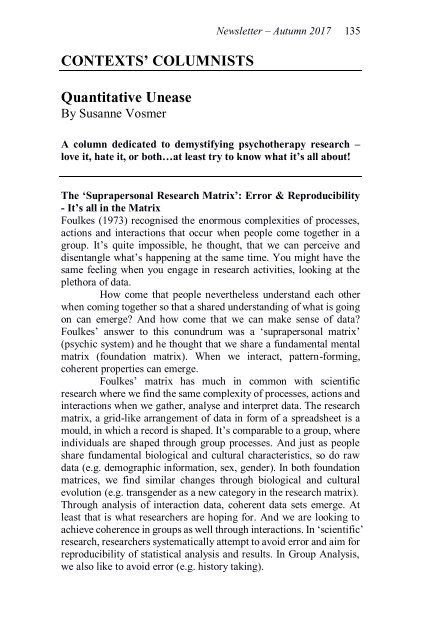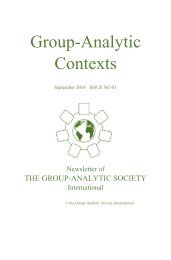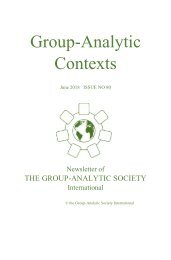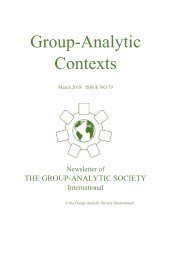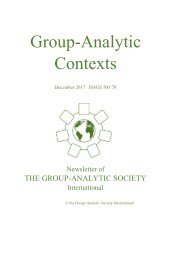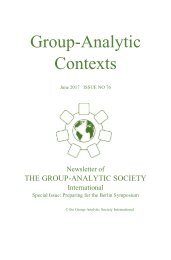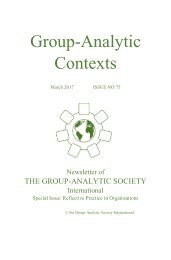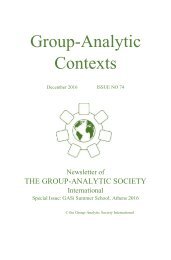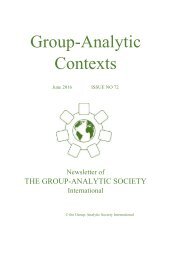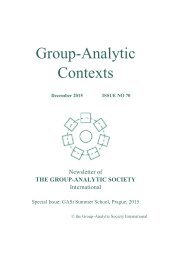Group Analytic Contexts, Issue 77, September 2017
Newsletter of the Group Analytic Society International
Newsletter of the Group Analytic Society International
Create successful ePaper yourself
Turn your PDF publications into a flip-book with our unique Google optimized e-Paper software.
CONTEXTS’ COLUMNISTS<br />
Quantitative Unease<br />
By Susanne Vosmer<br />
Newsletter – Autumn <strong>2017</strong> 135<br />
A column dedicated to demystifying psychotherapy research –<br />
love it, hate it, or both…at least try to know what it’s all about!<br />
The ‘Suprapersonal Research Matrix’: Error & Reproducibility<br />
- It’s all in the Matrix<br />
Foulkes (1973) recognised the enormous complexities of processes,<br />
actions and interactions that occur when people come together in a<br />
group. It’s quite impossible, he thought, that we can perceive and<br />
disentangle what’s happening at the same time. You might have the<br />
same feeling when you engage in research activities, looking at the<br />
plethora of data.<br />
How come that people nevertheless understand each other<br />
when coming together so that a shared understanding of what is going<br />
on can emerge? And how come that we can make sense of data?<br />
Foulkes’ answer to this conundrum was a ‘suprapersonal matrix’<br />
(psychic system) and he thought that we share a fundamental mental<br />
matrix (foundation matrix). When we interact, pattern-forming,<br />
coherent properties can emerge.<br />
Foulkes’ matrix has much in common with scientific<br />
research where we find the same complexity of processes, actions and<br />
interactions when we gather, analyse and interpret data. The research<br />
matrix, a grid-like arrangement of data in form of a spreadsheet is a<br />
mould, in which a record is shaped. It’s comparable to a group, where<br />
individuals are shaped through group processes. And just as people<br />
share fundamental biological and cultural characteristics, so do raw<br />
data (e.g. demographic information, sex, gender). In both foundation<br />
matrices, we find similar changes through biological and cultural<br />
evolution (e.g. transgender as a new category in the research matrix).<br />
Through analysis of interaction data, coherent data sets emerge. At<br />
least that is what researchers are hoping for. And we are looking to<br />
achieve coherence in groups as well through interactions. In ‘scientific’<br />
research, researchers systematically attempt to avoid error and aim for<br />
reproducibility of statistical analysis and results. In <strong>Group</strong> Analysis,<br />
we also like to avoid error (e.g. history taking).


